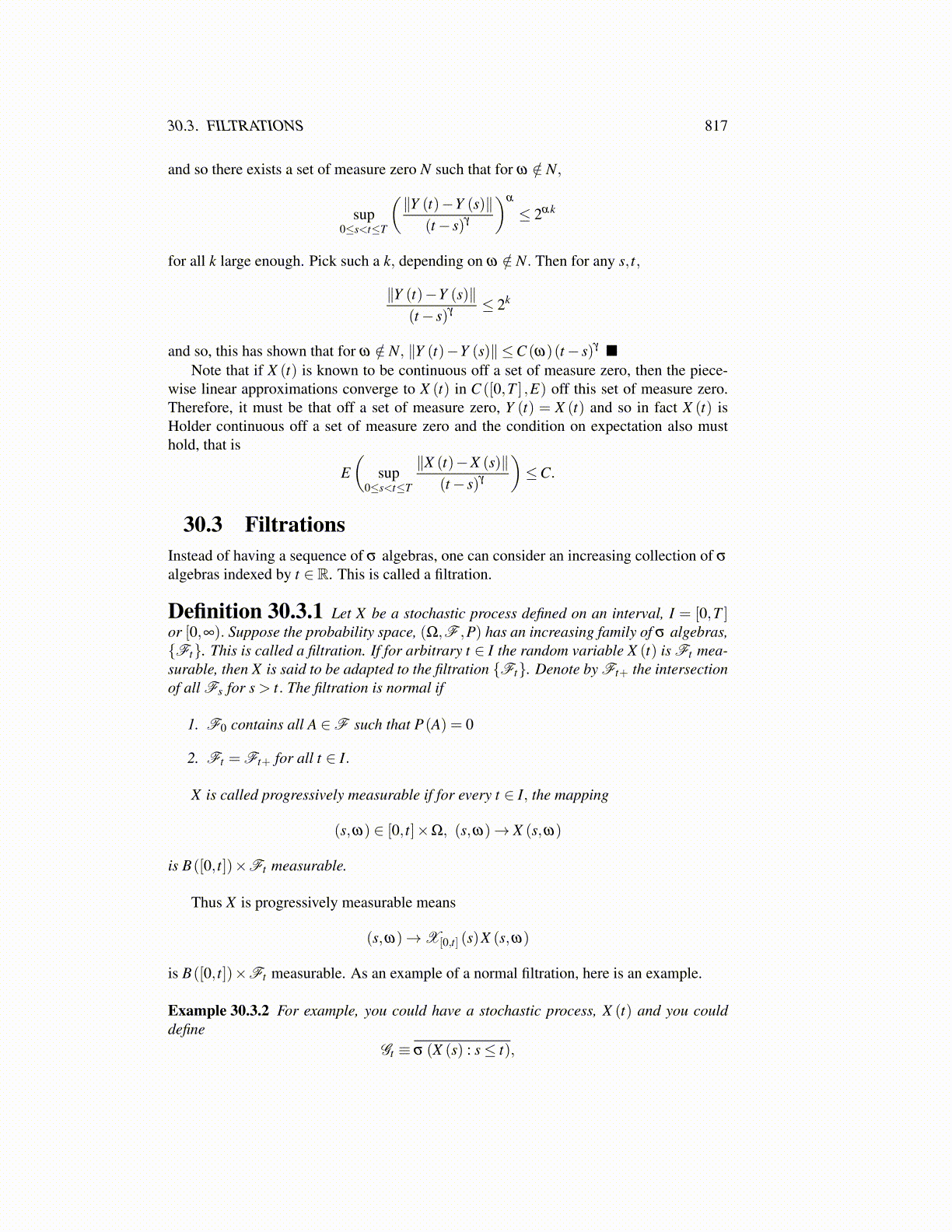
30.3. FILTRATIONS 817
and so there exists a set of measure zero N such that for ω /∈ N,
sup0≤s<t≤T
(∥Y (t)−Y (s)∥
(t− s)γ
)α
≤ 2αk
for all k large enough. Pick such a k, depending on ω /∈ N. Then for any s, t,
∥Y (t)−Y (s)∥(t− s)γ ≤ 2k
and so, this has shown that for ω /∈ N, ∥Y (t)−Y (s)∥ ≤C (ω)(t− s)γ ■Note that if X (t) is known to be continuous off a set of measure zero, then the piece-
wise linear approximations converge to X (t) in C ([0,T ] ,E) off this set of measure zero.Therefore, it must be that off a set of measure zero, Y (t) = X (t) and so in fact X (t) isHolder continuous off a set of measure zero and the condition on expectation also musthold, that is
E(
sup0≤s<t≤T
∥X (t)−X (s)∥(t− s)γ
)≤C.
30.3 FiltrationsInstead of having a sequence of σ algebras, one can consider an increasing collection of σ
algebras indexed by t ∈ R. This is called a filtration.
Definition 30.3.1 Let X be a stochastic process defined on an interval, I = [0,T ]or [0,∞). Suppose the probability space, (Ω,F ,P) has an increasing family of σ algebras,{Ft}. This is called a filtration. If for arbitrary t ∈ I the random variable X (t) is Ft mea-surable, then X is said to be adapted to the filtration {Ft}. Denote by Ft+ the intersectionof all Fs for s > t. The filtration is normal if
1. F0 contains all A ∈F such that P(A) = 0
2. Ft = Ft+ for all t ∈ I.
X is called progressively measurable if for every t ∈ I, the mapping
(s,ω) ∈ [0, t]×Ω, (s,ω)→ X (s,ω)
is B([0, t])×Ft measurable.
Thus X is progressively measurable means
(s,ω)→X[0,t] (s)X (s,ω)
is B([0, t])×Ft measurable. As an example of a normal filtration, here is an example.
Example 30.3.2 For example, you could have a stochastic process, X (t) and you coulddefine
Gt ≡ σ (X (s) : s≤ t),